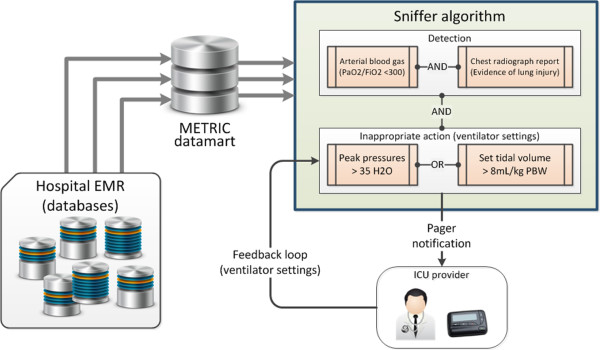Figure 4.

Smart environments alter system behaviors. Example of how a smart environment may be built upon an understanding of disease state and relevant provider actions (ventilator-induced lung injury is exacerbated by high tidal volumes), cognitive science (providers need information about the patient disease state and current ventilator settings to determine if a potentially injurious ventilator strategy is being applied to a patient), health care informatics (where do the data for each of the decision-making cues reside and how can the sensitivity and specificity of a smart alert algorithm be optimized to the condition of interest?), and ergonomics (who should be notified and how the message should be delivered - paged alerts are disruptive but very effective if they are meaningful to the recipient). EMR, electronic medical record; METRIC, multidisciplinary epidemiology and translational research in intensive care; PBW, predicted body weight.
